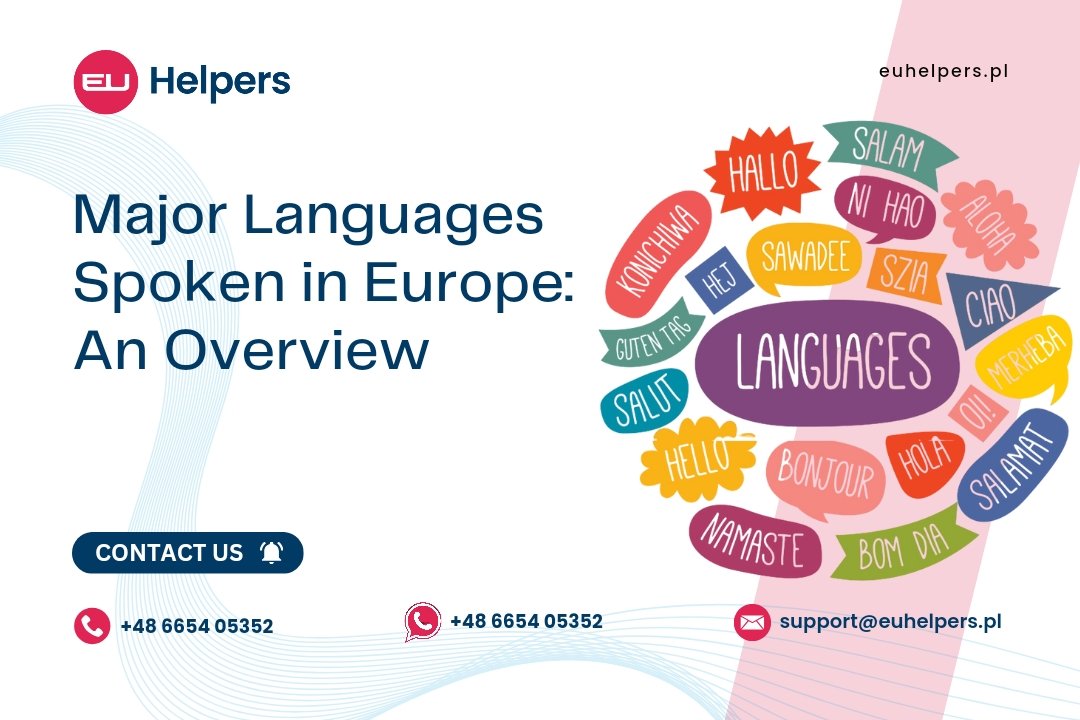Europe is a linguistic mosaic, with over 200 languages spoken across its diverse regions. However, a few languages stand out due to the significant number of speakers and the extensive geographical areas where they are spoken. Below is a detailed overview of some of the most widely spoken languages in Europe.
1. Russian
Russian is the most spoken language in Europe, with approximately 150 million speakers. It is predominantly spoken in Russia, where it serves as the official language. Beyond Russia's borders, Russian is also spoken in several other countries across Eastern Europe and the Baltics, including Belarus, Estonia, Latvia, Lithuania, Moldova, and Ukraine. The widespread use of Russian in these regions is a legacy of the Soviet era, where Russian was promoted as a lingua franca.
2. German
German is another major language in Europe, with about 95 to 100 million speakers. It is the official language of Germany, Austria, and Liechtenstein, and one of the official languages of Switzerland, Belgium, and Luxembourg. The German-speaking population is primarily concentrated in Central Europe, where it plays a significant role in culture, politics, and the economy. German is known for its rich literary tradition and is also widely studied as a second language in Europe.
3. French
French boasts around 80 million speakers in Europe. It is the official language of France and one of the official languages in Belgium, Switzerland, and Luxembourg. French is also spoken in Aosta Valley, a region in Italy, and in the microstate of Andorra. French is not only a major European language but also a global one, thanks to France's historical influence and colonial past. In Europe, French continues to be an important diplomatic and cultural language.
4. Turkish
Turkish is spoken by approximately 78 million people in Europe, primarily in Turkey. It also has a presence in several countries in the Balkans, such as Cyprus, North Macedonia, Greece, Serbia, Albania, and Kosovo. Turkish is the most widely spoken of the Turkic languages and serves as a bridge between Europe and Asia. The Turkish-speaking communities in the Balkans are a result of the Ottoman Empire's historical presence in the region.
5. Italian
Italian is spoken by around 60 million people, primarily in Italy, where it is the official language. Italian is also an official language in Switzerland, San Marino, and Vatican City. Italy's rich cultural heritage, particularly in art, music, and cuisine, has made the Italian language influential beyond its borders. Italian-speaking communities can also be found in neighboring countries, reflecting the movement of people across European borders over centuries.
6. English
English, with about 60 million speakers in Europe, is the official language of the United Kingdom and Ireland. It is also widely spoken in other European countries such as Spain, France, and Germany, where it is often used as a second language. The global dominance of English, particularly in business, science, and entertainment, has cemented its role as a key lingua franca in Europe. It is also the most studied foreign language on the continent.
7. Spanish
Spanish is spoken by approximately 43 million people in Europe. While it is primarily associated with Spain, Spanish is also spoken in Gibraltar and Andorra. Additionally, Spanish-speaking communities exist in France, Germany, and Portugal, often due to migration. As one of the world's most spoken languages, Spanish has a significant cultural and linguistic influence, particularly in Europe and Latin America.
8. Polish
Polish is spoken by around 36 million people, mainly in Poland. Polish-speaking communities can also be found in neighboring countries such as Czechia, Hungary, Belarus, and Ukraine. The Polish language is part of the West Slavic language group and has a rich literary tradition. Poland's history of migration has also led to the spread of the Polish language across various parts of Europe.
9. Ukrainian
Ukrainian is spoken by about 27 million people, primarily in Ukraine. Beyond Ukraine, there are Ukrainian-speaking communities in Russia, Poland, Romania, Latvia, and Estonia. Ukrainian is a member of the East Slavic language group and shares similarities with Russian and Belarusian. The Ukrainian language has seen a resurgence in recent years, particularly after Ukraine gained independence from the Soviet Union.
10. Dutch
Dutch is spoken by approximately 25 million people in Europe. It is the official language of the Netherlands and one of the official languages in Belgium. Dutch is also spoken in some regions of France and Germany. The Dutch language is part of the West Germanic language group and is closely related to German and English. It is known for its linguistic diversity, with several dialects spoken across the Netherlands and Belgium.
Europe's linguistic landscape is shaped by centuries of history, migration, and cultural exchange. While this article highlights some of the most widely spoken languages in Europe, the continent's linguistic diversity extends far beyond these major languages, making Europe a fascinating region for linguistic study and exploration.

